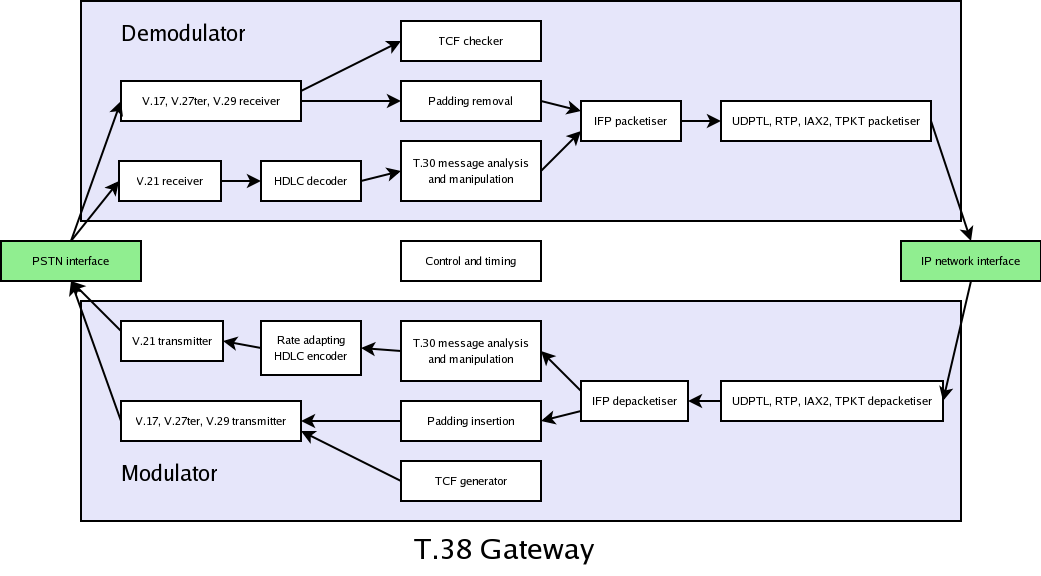Table of Contents

If the HDLC decoder in a T.38 gateway worked in whole frames, it would introduce unacceptable latency. Instead, the HDLC decoder must work progressively through the HDLC frames, outputing its results octet by octet. The T.38 message stream does not contain HDLC preamble, though it usually contains an indication that preamble is in progress. It does not contain the CRC octets, but simply an indication of whether the CRC is good or bad. The HDLC decoder provides an indication when preamble is being received, and checks the CRC octets at the end of frames to provide the good or bad indication. The decoder makes the frames available, octet by octet, to the T.38 engine for status tracking and possible modification. Tracking and modification imposes a few octets delay, but the goal is to keep this to the minimum possible. Whether the frames are modified or unmodified, good or bad they are always passed on, to maintain the appropriate timing flow for the T.30 protocol.
An interesting aspect of the timing flow of V.21 HDLC messages on the T.38 path relates to the size of the CRC. The usual practice for sending these frames is to send one octet in each message, with the messages spaced by the duration of one octet. They will normally be sent with the minimum possible delay. The CRC at the end of each frame is two octets long, and only an indication of good or bad is sent in the T.38 messages. It takes two octet times to know if the CRC is OK or not, typically causing the flow of T.38 messages to stutter by the duration of an octet. Since flow control within a frame is not possible when frames are replayed by a remote T.38 gateway, that gateway must allow for this inevitable stutter as it prepares to begin playout of the frame.